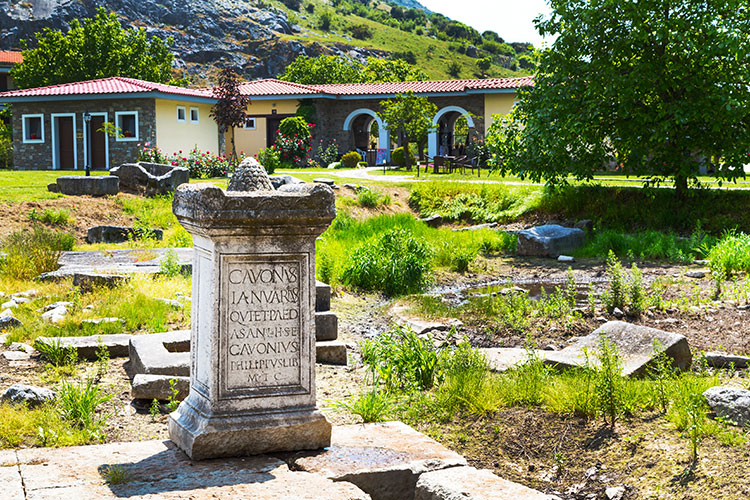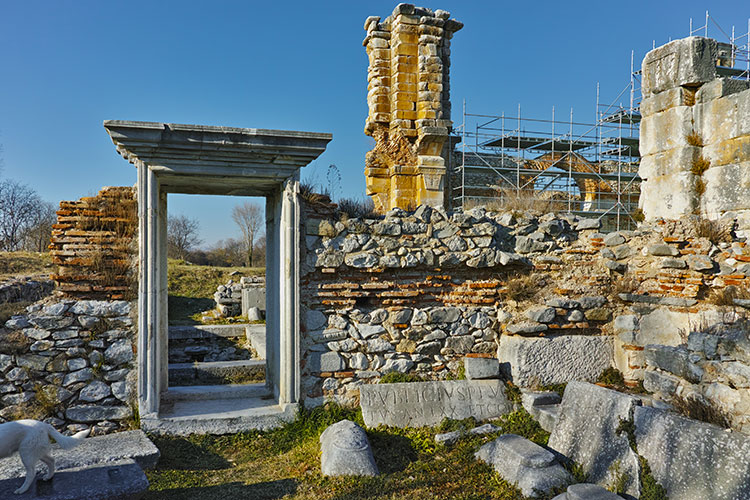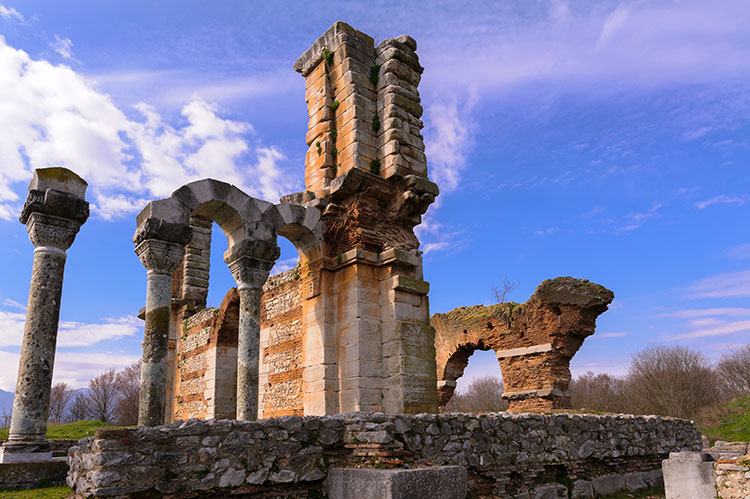
Apostle Paul Life, Teaching & Theology
Philippi: A loyal church, A long tradition
The church of Philippi was the first church that Paul founded in Europe during his second missionary journey. The mention of overseers and deacons in Philippians Epistle suggests that very soon the church consisted of more than just a few members.
What kinds of people joined the small and young church of Philippi?
For sure we know the names of Epaphroditus (Phlp 2:25-30), of Euodia and Syntyche, both mentioned in Philippians 4:2, of Clement (Phlp 4:3), Lydia, a dealer in purple fabric (Acts 16:14) and the gaoler (Acts 16:33). It is about middle and upper class people with great importance within the city of Philippi, a fact that can be assured by the financial support that the church provided to Paul more than once (Phlp 4:16 and 2 Cor 11:9). Moreover, inscriptions from the following centuries also show that the Christian community in Philippi consisted mainly of affluent Greek (and some Roman) people. A spirit of ecumenical brotherhood paradigm is obvious by the active support not only to Apostle Paul but also to the local church of Antiocheia when deprived of its pastor. The church of Philippi informed by Ignatius himself about the serious problems the Church of Antiocheia was dealing with, asked Polycarpus of Smyrna to deliver to the person he himself would choose its letters of support to the faithful of Antiocheia (Pol Phil 13:1)
 Above: Roman inscription outside St. Lydia's Baptistry, Philippi, Greece
Above: Roman inscription outside St. Lydia's Baptistry, Philippi, Greece
But what happened in the time after the Philippians received Paul's letter?
The most instructive source with regard to the church and the development of Christianity in Philippi in the second century is Polycarpus’ epistle to the Philippians around AD 160. Polycarpus was a bishop in Smyrna in the first decades of the second century. He was also a disciple of John’s, thus became the meddler for the Johannean tradition to flourish at Philippi. In one inscription, possibly from a cemetery, a certain Simon from Smyrna is mentioned (Pilhofer 2000:381-382). Elsewhere in his epistle, Polycarpus reminded the Philippians of some people from their midst who had died because of their belief (Pol, Phlp1:1; 9:1). These words show that the group of believers constituted a clearly identifiable community and that they had in some way or other autonomy in regard to the authorities. In any case, it is clear that the Christian community in Philippi did not live a hidden life, even the new religion was still banned within the Roman Empire.
Later (c 200CE), Tertullian mentioned the church of Philippi along with the churches of Corinth, Rome and Ephesos as paragons, where the real apostolic epistles were read (De praescriptione haereticorum 36:1-2).
We have very little information about the church of Philippi in the third century, in any case, we know that a large majority still worshipped Greek or Roman or other deities during that era. Most of the 187 sculptures, counted at the Acropolis can be attributed to this era.
 Above: Basilica in the archeological area of ancient Philippi, Greece
Above: Basilica in the archeological area of ancient Philippi, Greece
Fourth century grave inscriptions mention the “holy church of the Philippians”. Also, in Philippi and in other cities the correspondence between Jesus and Abgar was written at the entrance of the city in order to safeguard the inhabitants against war and other disasters. In one grave where a Christian was buried, coins were found that date from the time of Constantius II, (337-361) (Pilhofer 2000:96-97). Such foundings suggest that the Christian community must already have been a rather large group by the third century. In 313 Constantine allowed the Christians to serve their own God. Archaeological discoveries have demonstrated that the Basilica of Paul a single-naved church was built in Philippi at that religion-free-acting time. This Basilica of Paul, identified by a mosaic inscription on the pavement, is dated around 343 from a mention by the bishop Porphyrios, who was present at the Council of Serdica that year. After religious freedom was promulgated more churches were built.
It was presumably at the end of the fourth century that Paul’s Basilica was rebuilt and transformed into the so-called Octagon. About fifty years later, another extension was constructed. Meanwhile, another church was built, the so-called Ecclesia extra Muros, a few hundred metres to the east of the Neapolis gate. This church was used especially for funerals. Close to this church, an inscription was found naming the presbyters Faustinus and Donatus, who belonged to the catholic and apostolic holy church.
In the fifth and the sixth centuries many churches were built in the Roman Empire. Moreover, the crosses at the acropolis of Philippi were possibly erected in the fifth century in order to consecrate former pagan shrines. In this period three more churches were built in Philippi. The churches are referred to as Basilica A, Basilica B and Basilica G in the reference books, because their real names are unknown. To be more specific, Basilica B, a new church was planned to be built in the middle of the fifth century, but this new church, was never completed. In any way, According to many authors, the five churches in Philippi constitute “a remarkable phenomenon” (Abrahamsen 1995:172).
 Above: Ruins of a Christian church dating from 550 AD, known as Basilica B, Philippi, Greece
Above: Ruins of a Christian church dating from 550 AD, known as Basilica B, Philippi, Greece
Is this the end of the Church of Philippi?
It is clear that, as a Roman colony, Philippi had a certain status in Macedonia. This status influenced a lot the development of its church. Its significant geographic position between the East and the west and the great population mobility from East to West via the Egnatia road explain the above fact. Especially, this population renewal amplified Philippi’s status, because it treated the various religious trends within the bounds of a loyal Christian community, known throughout Christianity for its stable loyalty to the Paulian tradition while constituting a model for all local churches, especially those of Macedonia. During the fourth century, the administrative reorganization performed by Dioclitianus (tetrarchy) placed Macedonia in the wider administrative area lllyric in which Thessaloniki became the chief city. The administrative marginalization of Phillipi was completed at the end of the fourth century where Macedonia also became attached to the eastern part with the foundation of Constantinople. Philippi’s status was constricted due to this new administrative and ecclesiastic reality.
Already weakened by the Slavic invasions at the end of the 6th century, which ruined the agrarian economy of Macedon, and probably also by the Plague of Justinian in 547, the city was almost totally destroyed by an earthquake around 619, from which it never recovered.


